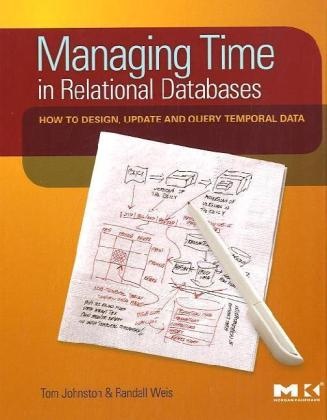Read more
Shows how to make the rich information content of bi-temporal data available to business users, while simplifying the design, maintenance and retrieval of that data. This book integrates an enterprise-wide viewpoint with a strong conceptual model of temporal data management allowing for realistic implementation of database application development.
List of contents
Part 1. An Introduction to Temporal Data ManagementChapter 1. A Brief History of Temporal Data ManagementChapter 2. A Taxonomy of Bi-Temporal Data Management MethodsPart 2. An Introduction to Asserted VersioningChapter 3. The Origins of Asserted Versioning: Computer Science ResearchChapter 4. The Origins of Asserted Versioning: IT Best PracticesChapter 5. The Core Concepts of Asserted VersioningChapter 6. Diagrams and Other NotationsChapter 7. The Basic ScenarioPart 3. Designing, Maintaining and Querying Asserted Version DatabasesChapter 8. Designing and Generating Asserted Versioning DatabasesChapter 9. An Introduction to Temporal TransactionsChapter 10.Temporal Transactions on Single TablesChapter 11. Temporal Transactions on Multiple TablesChapter 12. Deferred Assertions and Other Pipeline DatasetsChapter 13. Re-Presenting Internalized Pipeline DatasetsChapter 14. Allen Relationship and Other QueriesChapter 15. Optimizing Asserted Versioning DatabasesChapter 16. ConclusionAppendix: Bibliographical Essay
Report
"You cannot escape temporal data. You need to get over it, sit down and read what Tom and Randy are telling you in this book." --Joe Celko, Independent Consultant & Columnist for Intelligent Enterprise, USA"The authors present an original and comprehensive conceptual approach called Asserted Versioning, which includes support for bi-temporality and is a significant advance in the theory and practice of managing time-varying data." --Richard Snodgrass, Professor of Computer Science at the University of Arizona"Information technology consultants Johnston and Weis explain how to integrate time into a business data system, so that the past, present, and projected future of things can be accessed easily and quickly. Tables that show time are versioned tables, and they show how using them lowers the cost and increases the value of temporal data, data that shows change through time. They introduce temporal data management and asserted versioning, then look at designing, maintaining, and querying asserted version databases." --SciTech Book News

